Natal plum, Large num-num, Carissa
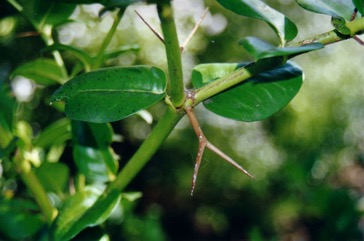
A subtropical and tropical plant. The plant grows in warm moist tropical regions. It will also grow in the dry subtropics if temperatures do not reach freezing. They can survive drought. They will grow on sandy soils. They do best on well drained soils. They do best in full sunlight but can tolerate light shade. It suits hardiness zones 10-12. In Wittunga Botanical Gardens Adelaide.
Also known as:
Amanthungula, Cereza de natal, Da hua jia hu ci, Kiskis natal, Mbanza, Umthungulu
Synonyms
- Arduina grandiflora E. Mey.
- Arduina macrocarpa Eckl.
- Carissa africana A. DC.
- Carissa grandiflora (E. Mey.) A. DC.
- Jasminonerium africanum (A. DC.) Kuntze
- Jasminonerium grandiflorum (E. Mey.) Kuntze
Edible Portion
- Fruit
Where does Natal plum grow?
Found in: Africa, Asia, Australia, Bahamas, Brazil, Canada, China, Cuba, Dominica, East Africa, Ethiopia, Hawaii, India, Indonesia, Malawi, Mexico, Mozambique, North America, Pacific, Philippines, SE Asia, Slovenia, South Africa, Southern Africa, South America, Tanzania, United States
Notes: There about 20-37 Carissa species. All Carissa species bear edible fruit. They grow in the tropics and subtropics.
Status: The fruit are important in Natal province in January and February. It is a cultivated food plant.
Growing Natal plum, Large num-num, Carissa
Cultivation: The plant can be grown from seed or cuttings. They can also be grown using layering or budding. Cuttings need to be put in soil with bottom heat to produce roots. To maintain good quality fruit, vegetative methods are best. Plants with shrubby growth habit normally are more productive than straggly types. Regular pruning helps increase fruit production by avoiding excessive branch growth. For use in hedges, plants are grown in nurseries then planted out 30 cm apart in staggered rows.
Edible Uses: The partly ripe fruits are used for jelly Fully ripe fruit are used in pies or eaten fresh. The seeds can be eaten. The fruit make good jam and chutney. They are used for juice. Fruit can be frozen, dried or bottled for later use.
Production: Plants grow rapidly under suitable conditions. Plants flower and fruit throughout most of the year. Most fruit occur in the summer months. A fruit weighs about 14 g.
Nutrition Info
per 100g edible portion| Edible Part | Energy (kcal) | Protein (g) | Iron (mg) | Vitamin A (ug) | Vitamin c (mg) | Zinc (mg) | % Water |
|---|---|---|---|---|---|---|---|
| Fruit | 62 | 0.5 | 1.3 | 4 | 38 | - | 84.2 |
Natal plum, Large num-num, Carissa Photos

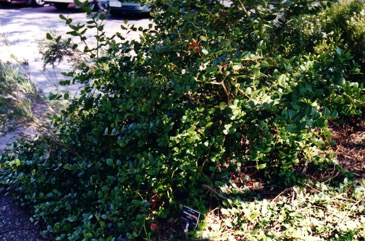
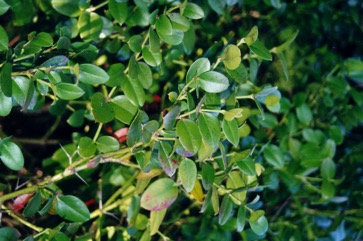
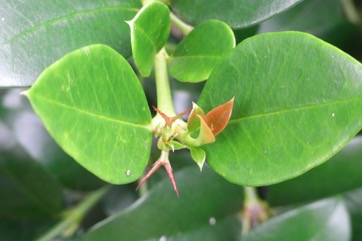
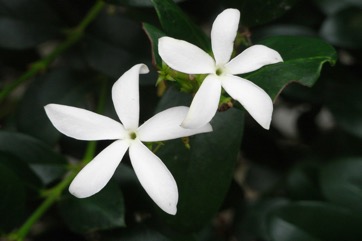
References
Awodoyin, R.O., Olubode, O.S., Ogbu, J.U., Balogun, R.B., Nwawuisi, J.U. and Orji, K.O., 2015, Indigenous Fruit Trees of Tropical Africa: Status, Opportunity for Development and Biodiversity Management. Agricultural Sciences, 6, 31-41
Brickell, C. (Ed.), 1999, The Royal Horticultural Society A-Z Encyclopedia of Garden Plants. Convent Garden Books. p 230
Coronel, R.E., 1982, Fruit Collections in the Philippines. IBPGR Newsletter p 9
Cundall, P., (ed.), 2004, Gardening Australia: flora: the gardener's bible. ABC Books. p 331
Etherington, K., & Imwold, D., (Eds), 2001, Botanica's Trees & Shrubs. The illustrated A-Z of over 8500 trees and shrubs. Random House, Australia. p 181
Facciola, S., 1998, Cornucopia 2: a Source Book of Edible Plants. Kampong Publications, p 22
Flora of China. www.eFloras.org
FAO, 1988, Traditional Food Plants, FAO Food and Nutrition Paper 42. FAO Rome p 143
Fox, F. W. & Young, M. E. N., 1982, Food from the Veld. Delta Books. p 89
Hibbert, M., 2002, The Aussie Plant Finder 2002, Florilegium. p 60
Hu, Shiu-ying, 2005, Food Plants of China. The Chinese University Press. p 630
INFOODS:FAO/INFOODS Databases
Jardin, C., 1970, List of Foods Used In Africa, FAO Nutrition Information Document Series No 2.p 125
Joffe, P., 2007, Creative Gardening with Indigenous Plants. A South African Guide. Briza. p 216
Li Ping-tao; Antony J. M. Leeuwenberg, David J. Middleton, Apocynaceae, Flora of China, Vol. 16 p 146
Llamas, K.A., 2003, Tropical Flowering Plants. Timber Press. p 65
Lorenzi, H., Bacher, L., Lacerda, M. & Sartori, S., 2006, Brazilian Fruits & Cultivated Exotics. Sao Paulo, Instituto Plantarum de Estuados da Flora Ltda. p 364
Lyle, S., 2006, Discovering fruit and nuts. Land Links. p 107
Morton, Julia F., 1987, Fruits of Warm Climates. Creative Resources Systems, Inc. . p. 420
Palgrave, K.C., 1996, Trees of Southern Africa. Struik Publishers. p 784
Palmer, E and Pitman, N., 1972, Trees of Southern Africa. Vol. 2. A.A. Balkema, Cape Town p 1901
Peters, C. R., O'Brien, E. M., and Drummond, R.B., 1992, Edible Wild plants of Sub-saharan Africa. Kew. p 57
Plowes, N. J. & Taylor, F. W., 1997, The Processing of Indigenous Fruits and other Wildfoods of Southern Africa. in Smartt, L. & Haq. (Eds) Domestication, Production and Utilization of New Crops. ICUC p 187
Prodr. 8:336. 1844
PROSEA (Plant Resources of South East Asia) handbook, Volume 2, 1991, Edible fruits and nuts.
Recher, P, 2001, Fruit Spirit Botanical Gardens Plant Index. www.nrg.com.au/~recher/ seedlist.html p 1
Ruiters-Welcome, A. K., 2019, Food plants of southern Africa. Ph.D. thesis. Univ. of Johannesburg p 22
Segura, S. et al, 2018, The edible fruit species in Mexico. Genet Resour Crop Evol (2018) 65:1767–1793
Staples, G.W. and Herbst, D.R., 2005, A tropical Garden Flora. Bishop Museum Press, Honolulu, Hawaii. p 119 (Drawing)
Sukarya, D. G., (Ed.) 2013, 3,500 Plant Species of the Botanic Gardens of Indonesia. LIPI p 604
USDA, ARS, National Genetic Resources Program. Germplasm Resources Information Network - (GRIN). [Online Database] National Germplasm Resources Laboratory, Beltsville, Maryland. Available: www.ars-grin.gov/cgi-bin/npgs/html/econ.pl (10 April 2000)
van Wyk, Be, & Gericke, N., 2007, People's plants. A Guide to Useful Plants of Southern Africa. Briza. p 36
van Wyk, B, van Wyk, P, and van Wyk B., 2000, Photographic guide to Trees of Southern Africa. Briza. p 10
van Wyk, B-E., 2011, The potential of South African plants in the development of new food and beverage products. South African Journal of Botany 77 (2011) 857–868
Venter, F & J., 2009, Making the most of Indigenous Trees. Briza. p 90
Verheij, E. W. M. and Coronel, R.E., (Eds.), 1991, Plant Resources of South-East Asia. PROSEA No 2. Edible fruits and nuts. Pudoc Wageningen. p 322
Wilson, A.L. & Downs, C. T., 2012, Fruit nutritional composition and non-nutritive traits of indigenous South African tree species. South African Journal of Botany. 78:30-36
World Checklist of Useful Plant Species 2020. Royal Botanic Gardens, Kew
www.tradewindsfruit.com
Young, J., (Ed.), 2001, Botanica's Pocket Trees and Shrubs. Random House. p 196